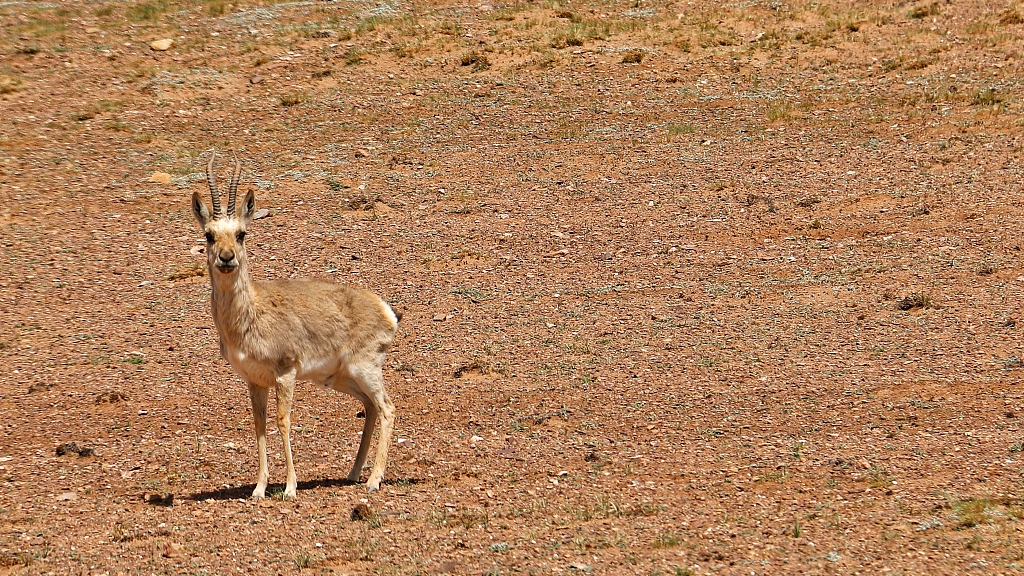

Sanjiangyuan National Natural Reserve welcomes its 19th anniversary. The area is source of 3 main rivers in China. /VCG Photo
In Chinese, the name "Sanjiangyuan" means "headstream of three rivers", the source of Yangze River, Yellow River, and Lancang River, three of the main water systems in Asia. China established a national natural reserve in Sanjiangyuan area on August 19, 2000. As the second-largest natural reserve with the highest altitude, Sanjiangyuan functions as the core base of eco-conservation in China.
Located on Qinghai-Tibet plateau, parts of which span southwest China's Tibet Autonomous Region and northwestern Qinghai Province, Sanjiangyuan area is usually seen as arid and frigid. It is home to a variety of rare animals. According to Sanjiangyuan official website, the natural reserve accommodates 85 species of mammals, 237 species of birds, 48 species of amphibians. Among them, 54 species are endemic to Qinghai-Tibet plateau; 16 species are under first-class national protection while 53 species are classified as the second-class under national protection. Let's take a look at the natural resource vault and its residents.

One of the symbolic species in China's Sanjiangyuan national natural reserve, Tibetan antelope. /VCG Photo

The population of Tibetan antelope, or Chiru, has been increasing because of conversational efforts made by natural reserves, including Sanjiangyuan. /VCG Photo

However, the Tibetan gazelle, or Goa, is less fortunate. Their number is still decreasing. /VCG Photo

Tibetan wild donkey, or Kiang, is one of the big mammals living in the highest altitude areas including the Sanjiangyuan national natural reserve. /VCG Photo

Many kinds of ungulates thrive in Sanjiangyuan, including "climbing athletes" Himalaya blue sheep. /VCG Photo

Though domestic yaks are common in Qinghai and Tibet, their cousins in the wild may be far rarer. According to IUCN, the number of mature wild yaks may be less than 10,000. /VCG Photo

Blue-eared pheasant, one of the most distinctive and beautiful pheasants in China, also habitats in Sanjiangyuan. /VCG Photo

In early spring of every year, the black-necked cranes will migrate to Qinghai lake and surrounding wetlands to breed. /VCG Photo

Sanjiangyuan is also home to many predator birds including golden eagles, bearded vultures, and red falcons. /VCG Photo

The cute fluffy rodent, Plateau pika, is a species endemic to China. /VCG Photo

Residing in Sanjiangyuan area, the wild snow leopard is a lot rarer than the giant panda. /VCG Photo
(Cover image via VCG)
(If you want to contribute and have specific expertise, please contact us at nature@cgtn.com.)

Copyright © 2018 CGTN. Beijing ICP prepared NO.16065310-3
Copyright © 2018 CGTN. Beijing ICP prepared NO.16065310-3